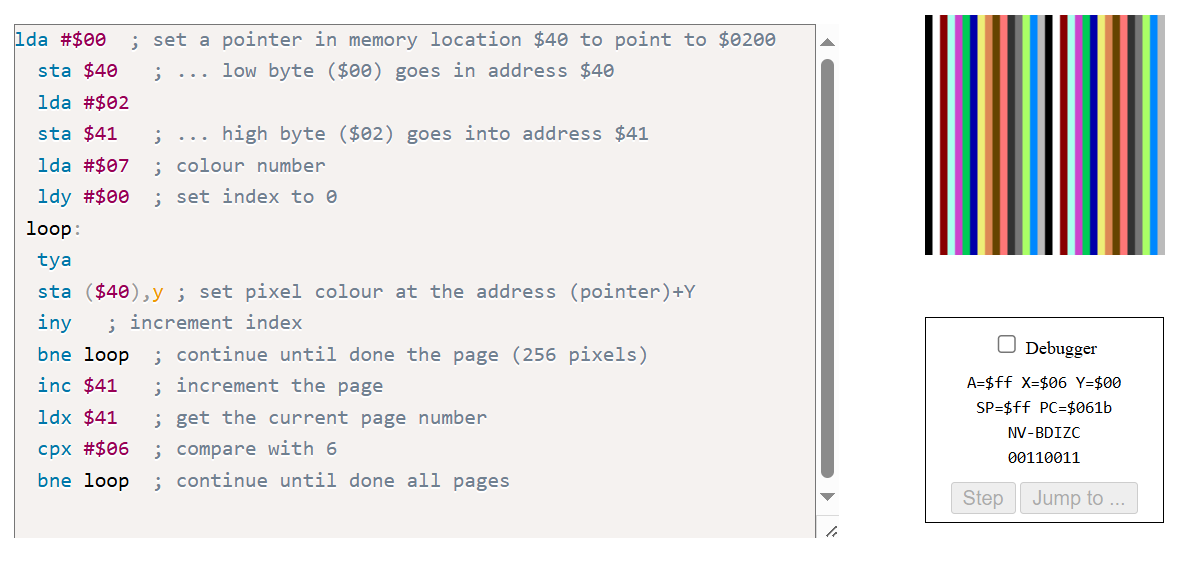Lab 2 - Lab Results
Introduction In this blog post, I will share my experience working on a lab where we animated a small 5x5 graphic to move diagonally across the screen and bounce off the edges. The lab required an understanding of low-level memory manipulation, conditional logic, and efficient screen rendering. I'll walk you through the code, the changes made to implement bouncing logic, and my reflections on the learning process. **Since we collaborated as a group on optimizing the code, my work may resemble that of my teammates =================================================================== Initial Code The following code moves a 5×5 graphic diagonally across the screen: ; ; draw-image-subroutine.6502 ; ; This is a routine that can place an arbitrary ; rectangular image on to the screen at given ; coordinates. ; ; Chris Tyler 2024-09-17 ; Licensed under GPLv2+ ; ; ; The subroutine is below starting at the ; label "DRAW:" ; ; Test code for our subroutine ; Moves an image diagon...

